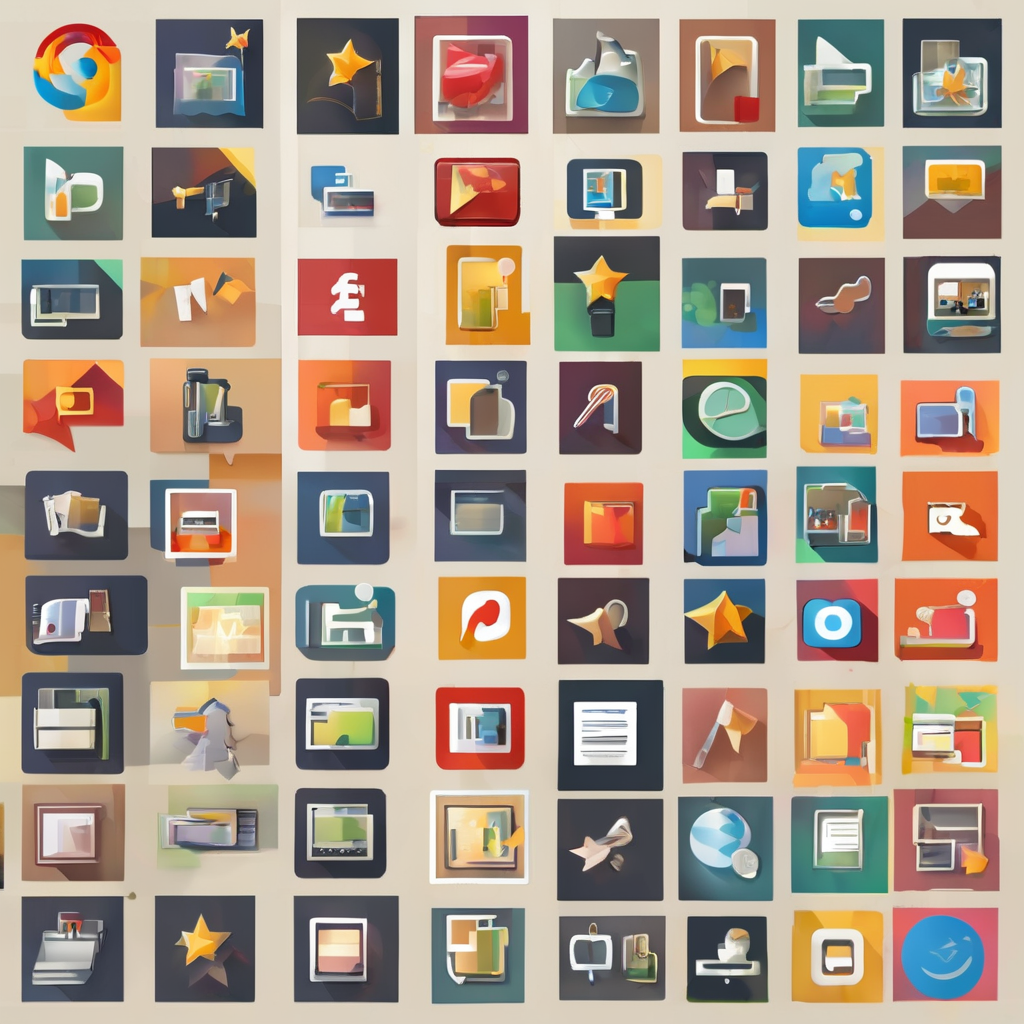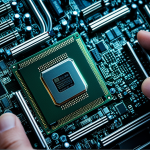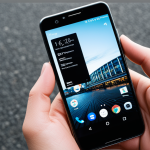Essential Smartphone Features to Compare
When embarking on a smartphone comparison, understanding core smartphone features is crucial to making an informed purchase. Evaluating these features carefully ensures that your chosen device aligns well with your personal needs and lifestyle. For example, a user focused on multimedia might prioritize display technology and camera quality, while someone prioritizing productivity may value processor speed and software experience more.
The importance of assessing these features lies in the diverse range of options available on the market. Not all smartphone features hold equal weight for every buyer. Factors such as battery life, storage, operating system, connectivity, and durability should be weighed relative to your daily habits and intended usage.
Topic to read : Smart ways to sell your iphone 16 for top cash value
Individual preferences dramatically affect how feature priorities rank. A casual user seeking basic communication and occasional browsing might focus on battery efficiency and user-friendly interfaces, while a tech enthusiast could demand the latest processor, high refresh rate screens, and top-tier camera capabilities. Therefore, a well-rounded buying guide encourages buyers to identify which features are non-negotiable and which can be compromise areas. This approach reduces confusion and helps avoid overspending on unnecessary specifications.
Ultimately, a detailed comparison of smartphone features should consider:
Have you seen this : What Should You Look for When Buying a New Smartphone in the UK?
- Your primary usage scenarios and lifestyle demands.
- Which specifications impact your experience most profoundly.
- How to balance performance, price, and practicality.
By keeping these aspects in mind, you can approach smartphone buying decisions with clarity, ensuring the device serves you optimally over time.
Camera Quality and Performance
When comparing smartphone camera quality, understanding the key camera specifications is essential for selecting a device that suits your photography needs. The number of megapixels influences detail capture, yet sensor technology and lens type often play a more significant role in image clarity and color accuracy. For example, larger sensors generally allow for better light absorption, improving pictures in various conditions.
Low-light performance is a decisive factor for many users. Features like optical image stabilization (OIS) reduce blur caused by hand movement, while advanced lenses and night modes enhance photo quality in dim environments. Optical zoom offers flexibility beyond digital zoom, preserving image fidelity when enlarging subjects.
Different users prioritize camera abilities distinctly. Casual photographers may favor simple interfaces with automatic modes, while enthusiasts seek manual controls and high-resolution sensors. Content creators often require robust video features such as 4K recording, frame rate options, and audio quality enhancements.
By carefully examining photo and video features, you ensure the chosen smartphone camera aligns with your creative demands, balancing ease of use and technical sophistication effectively.
Battery Life and Charging Capabilities
Battery life is a cornerstone smartphone feature that greatly influences user satisfaction and daily usability. The battery capacity, typically measured in milliamp hours (mAh), directly affects how long your device can operate between charges. Higher mAh usually translates to longer usage, but actual endurance depends on how efficiently the phone manages power, considering factors like screen size and background processes.
Charging technology also plays a critical role in overall convenience. Fast charging allows users to regain significant battery life in short periods, which is invaluable for heavy users who rely on their phones throughout the day. Wireless charging adds the benefit of cable-free power top-ups, though it usually charges slower compared to wired methods. Battery longevity, or the lifespan of the battery, depends on both hardware quality and software optimization, affecting performance over months or years.
Users with different habits will have varied requirements for smartphone battery life. Heavy users, such as gamers or professional content creators, benefit from large battery capacities and rapid charging to maintain their workflow without interruptions. Conversely, light users might prioritize battery efficiency over sheer capacity, preferring devices that optimize power consumption for extended standby times.
In summary, when conducting a smartphone comparison, evaluating both battery capacity and available charging technologies is essential. The right mix ensures the device can sustain your usage patterns while minimizing downtime and preserving battery health over time.
Display Technology and Quality
Selecting the right smartphone display types significantly shapes your user experience. The two most common display types are OLED and LCD. OLED screens offer vibrant colors, deeper blacks, and better contrast, enhancing visuals for gaming and streaming. LCDs, while generally more affordable, provide solid brightness and color accuracy but may lack the vividness OLED panels achieve.
Screen resolution relates directly to image sharpness. Higher resolution displays render text and images with greater clarity, which benefits activities like reading and photo viewing. Typical resolutions range from Full HD to Quad HD, with larger smartphones often supporting higher pixel densities for crisp visuals. Brightness levels also impact usability, especially outdoors; displays with high brightness maintain visibility in sunlight.
Refresh rate is another crucial parameter influencing smoothness. Standard smartphones have a 60Hz refresh rate, but many modern devices feature 90Hz or 120Hz panels. Higher refresh rates deliver fluid animations and reduced motion blur, which appeal especially to users who play fast-paced games or scroll frequently.
To summarize, when doing a smartphone comparison, consider:
- Display technology (OLED vs. LCD) according to your quality and budget preferences.
- Resolution and brightness for comfortable viewing in various light settings.
- Refresh rate to ensure smoothness tailored to your daily tasks.
These factors ensure your smartphone’s screen matches your lifestyle, whether for immersive media consumption or efficient productivity.
Processor and Performance Specifications
Choosing the right smartphone processor is fundamental when seeking speed and efficient multitasking. The processor, typically composed of the CPU and GPU, dictates how swiftly your device runs apps and handles complex tasks. For example, high-end chipsets provide smoother gaming experiences and faster app loading times, whereas mid-range processors balance performance and power consumption, suitable for everyday use.
RAM complements the processor by managing active applications and background processes, ensuring your phone operates seamlessly without lag. More RAM generally means better multitasking capability, especially useful for users running multiple apps or demanding software simultaneously.
Performance benchmarks offer objective measures to compare processors and chipsets. These scores reflect real-world speed and graphical capabilities, helping you identify which smartphones deliver superior performance. For gaming enthusiasts or business users requiring rapid data processing, opting for a device with a powerful processor and ample RAM is advisable, while general users may prioritize balanced performance with efficient energy use.
In a smartphone comparison, focusing on processor and performance specifications helps tailor your choice to your specific needs—be it intense gaming, professional productivity, or casual browsing. Prioritizing these components ensures your smartphone delivers responsiveness and longevity aligned with your daily activities.
Storage and Memory Options
Choosing the right smartphone storage capacity is vital to ensure your device meets your usage demands. Typical internal storage ranges from 64GB to 512GB or more, with larger capacities benefiting users who store extensive photo and video libraries, install many apps, or download large files. When asking, “How much storage do I need?” the precise answer depends on your habits: casual users may be comfortable with 64GB, while power users often require 256GB or higher.
Expandable memory via microSD cards offers a flexible alternative, allowing additional storage without increasing upfront costs. However, not all smartphones support this feature, and microSD cards may offer slower speeds compared to internal storage, potentially affecting app performance and data access times. It’s important to verify whether your preferred device supports expandable storage and to consider whether this method fits your need for speed and convenience.
RAM plays a complementary role by managing multiple apps and processes simultaneously, enhancing overall responsiveness. Devices typically offer RAM sizes ranging from 4GB to 12GB or more. For example, users running numerous apps or engaging in multitasking benefit from higher RAM, which reduces lag and improves fluidity. Conversely, casual users with minimal multitasking needs may find 4GB sufficient.
In summary, evaluating smartphone storage alongside RAM helps tailor your purchase to your personal usage profile. App-heavy users should prioritize larger internal storage and more RAM to maintain smooth performance, whereas casual users with simpler demands can opt for lower specifications. Flexible options like expandable memory further customize your device’s storage capacity according to evolving needs.
Operating System and Software Experience
Choosing the right smartphone operating system is a foundational step in any smartphone comparison. The two dominant systems, iOS and Android, each offer distinct advantages that influence user interaction and satisfaction deeply. iOS, exclusive to Apple devices, is praised for its intuitive user interface and seamless integration within the Apple ecosystem, making it highly efficient for users invested in Apple products. Android, in contrast, presents broader hardware compatibility and customization options, catering to a diverse range of user preferences and budgets.
One key question often asked is: How do software updates affect smartphone performance and longevity? The answer is that software updates provide essential security patches, new features, and performance improvements. iOS devices typically receive updates simultaneously and for longer periods compared to most Android models, which can vary by manufacturer and carrier. Regular updates help maintain device responsiveness and compatibility with new apps, thereby extending the phone’s useful life.
Another critical aspect is ecosystem integration. A smartphone’s ability to sync with other devices like tablets, wearables, or smart home gadgets can streamline daily tasks. iOS users benefit from features like AirDrop and Handoff that enable smooth cross-device functionality, while Android’s open nature supports a wide array of third-party integrations and services.
In assessing smartphone software experience, usability factors such as ease of navigation, customization potential, and preloaded apps also matter. For instance, some users prefer a clean, minimal interface with fewer pre-installed apps, while others seek devices rich in features out of the box.
Overall, understanding these core elements helps tailor your buying guide around software preferences and update policies, ensuring your smartphone delivers satisfaction and reliability in the long term.
Connectivity, Network, and Additional Features
When conducting a thorough smartphone comparison, evaluating smartphone connectivity is vital to ensure your device meets your communication and data needs. Modern smartphones commonly support 5G networks, which offer faster download and upload speeds, lower latency, and improved reliability compared to 4G. The presence of 5G can future-proof your device, allowing seamless streaming, gaming, and browsing even in bandwidth-intensive scenarios.
Wi-Fi standards like Wi-Fi 5 (802.11ac) and Wi-Fi 6 (802.11ax) affect wireless internet performance. Wi-Fi 6 offers faster speeds, better efficiency, and improved performance in congested environments, which benefits users who rely on stable and rapid connections at home or public hotspots. Bluetooth versions impact peripheral connectivity, with newer iterations providing enhanced range, speed, and battery efficiency. This is especially relevant for users who use wireless headphones, smartwatches, or fitness trackers.
Additional connectivity features include dual SIM support, allowing you to use two phone numbers on a single device—ideal for balancing work and personal contacts or for travelers switching between networks. Near Field Communication (NFC) enables mobile payments and quick device pairing, becoming increasingly essential as contactless transactions gain popularity.
Some users still value the inclusion of a headphone jack for wired audio compatibility, though many modern smartphones omit this feature in favor of wireless audio standards. Other extras like FM radio or infrared blasters cater to niche needs but remain valued by certain user segments.
Ultimately, the variety of smartphone connectivity options ensures flexibility tailored to individual preferences. Heavy data users and tech enthusiasts will benefit from comprehensive 5G and Wi-Fi 6 support, while casual users may prioritize essentials like Bluetooth and dual SIM functionality for convenience. Evaluating these factors carefully within your smartphone comparison simplifies the decision-making process and aligns the device’s capabilities with your lifestyle demands.
Durability, Build Quality, and Design
Smartphone durability plays a key role in ensuring long-term usability and protection against daily wear and tear. The choice of build materials—commonly glass, metal, or plastic—significantly affects a phone’s resistance to scratches, drops, and overall sturdiness. Premium smartphones often use strengthened glass like Gorilla Glass coupled with metal frames, delivering a solid yet elegant feel. Plastic bodies may reduce weight and cost but often sacrifice some rigidity and premium tactile experience.
Water and dust resistance are critical smartphone features for users exposed to harsh environments or accidental spills. Ratings such as IP67 and IP68 indicate official protection levels; for instance, IP68-certified devices withstand immersion in water up to certain depths for specified durations. Understanding these durability standards helps buyers select designs suitable for their lifestyle—whether that means occasional outdoor use or rigorous daily exposure.
Ergonomics and aesthetic design also influence user comfort and satisfaction. Phones with curved edges, optimal weight distribution, and appropriate dimensions enhance one-handed use and reduce fatigue during prolonged handling. Design preferences vary widely, but a balance between visual appeal and practical comfort is essential.
In a smartphone comparison, considering durability, build quality, and design ensures you invest in a device that withstands physical challenges and complements your personal style. Prioritizing robust materials and resistance ratings aligned with your daily activities leads to an enjoyable, worry-free ownership experience.
Pricing, Value, and Buying Tips
Understanding smartphone price comparison is crucial to balancing your budget against desired features. Smartphones generally fall into three segments: flagship, mid-range, and budget. Flagship devices offer cutting-edge technology and premium builds but come with higher price tags. Mid-range models provide strong performance and decent features at a moderate cost, while budget phones target essential functions at accessible prices.
A common question is: Which features are worth paying extra for? Features such as advanced camera systems, high-quality displays with OLED technology, and powerful processors often justify a higher investment because they directly impact user experience and longevity. Conversely, standard features like basic battery life or entry-level storage may be sufficient in lower-cost models, depending on your needs.
Effective buying tips emphasize clearly defining your priorities before purchasing. Start by identifying non-negotiable smartphone features to avoid overspending. Comparing devices within your desired price range while focusing on vital specifications helps maximize value for money. Additionally, watch for seasonal deals or bundles that can enhance value without compromising quality.
In summary, aligning your purchase with a realistic budget and informed expectations ensures you select a smartphone that provides the best balance of cost, performance, and longevity.










